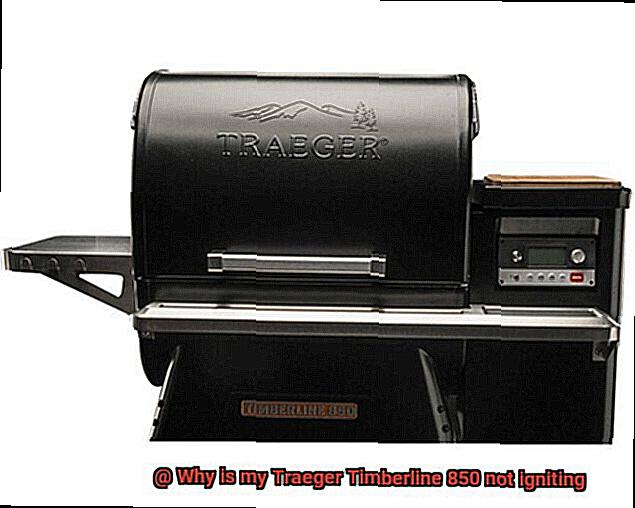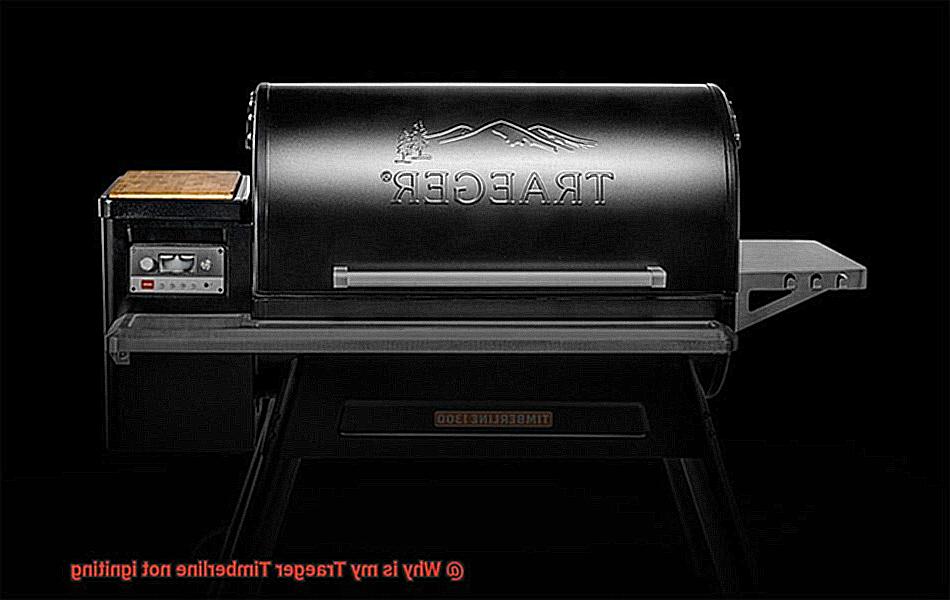Why Is My Traeger Not Igniting

The popularity of pellet grills, particularly Traeger grills, has exploded in recent years. Offering a blend of smoking and grilling capabilities, they've become a backyard staple for many. However, one common frustration among users is the dreaded "Traeger won't ignite" scenario. This article delves into the troubleshooting steps, underlying HVAC principles, and career connections related to diagnosing and resolving this issue, providing valuable insights for HVAC students, technicians, and employers alike.
Understanding the Ignition System: An HVAC Perspective
While seemingly simple, a Traeger's ignition system shares fundamental similarities with larger HVAC appliances like furnaces. Both rely on controlled combustion, airflow, and electrical components to initiate and sustain a flame. Understanding these similarities is crucial for HVAC professionals, as it allows them to apply their existing knowledge to a broader range of appliances.
The typical ignition process in a Traeger involves:
- Auger Motor: Feeds wood pellets from the hopper into the firepot.
- Hot Rod (Igniter): An electric heating element that glows red-hot, igniting the pellets.
- Draft Fan: Provides airflow to fuel the combustion process and distribute heat.
- Temperature Sensor (RTD): Monitors the internal temperature and adjusts the pellet feed rate and fan speed to maintain the desired temperature.
- Control Board: The brain of the operation, managing all the components based on user input and sensor feedback.
Just like a furnace, a malfunction in any of these components can prevent ignition. For HVAC professionals, this translates to familiar troubleshooting techniques: checking power supplies, examining wiring, testing components with a multimeter, and verifying sensor readings.
Troubleshooting Steps: A Systematic Approach
When your Traeger refuses to ignite, a systematic approach is key to identifying the culprit. Here's a breakdown of the common causes and how to diagnose them:
1. Power Supply Issues
The first step is to ensure the grill is receiving power. Check the following:
- Verify the power cord is securely plugged into both the grill and a working outlet.
- Test the outlet with another appliance to rule out electrical issues.
- Check the grill's fuse (if equipped). A blown fuse indicates a more serious electrical problem.
HVAC technicians are trained in electrical safety and troubleshooting, making this a natural starting point for them. Knowledge of voltage testing and circuit analysis is directly applicable here.
2. Hopper and Auger Problems
If the grill has power but isn't feeding pellets, the issue likely lies within the hopper or auger system:
- Ensure the hopper is filled with dry, high-quality wood pellets. Damp pellets won't ignite properly.
- Visually inspect the auger for obstructions. Foreign objects, clumped pellets, or excessive sawdust can jam the auger.
- Listen for the auger motor. If you don't hear it running when the grill is powered on, the motor may be faulty.
Career Connection: Preventative maintenance is crucial. HVAC technicians often emphasize the importance of clean filters and unobstructed airflow in HVAC systems. The same principle applies to pellet grills; regular cleaning and proper pellet storage can prevent many issues.
3. Hot Rod (Igniter) Malfunction
The hot rod is a common point of failure. Here's how to check it:
- Carefully inspect the hot rod for physical damage. Cracks or breaks indicate it needs replacement.
- Use a multimeter to test the hot rod's resistance. A reading outside the specified range indicates a faulty hot rod. Refer to the Traeger's service manual for the correct resistance value.
- Observe the hot rod during the startup cycle. It should glow red-hot within a few minutes. If it doesn't, it's likely defective.
This is where HVAC skills shine. Technicians are proficient in using multimeters to diagnose electrical components. This skill translates directly to diagnosing a faulty hot rod.
4. Draft Fan Issues
Proper airflow is essential for ignition. If the draft fan isn't working, the pellets won't ignite or sustain a flame:
- Listen for the draft fan running during the startup cycle. If you don't hear it, the motor may be faulty.
- Visually inspect the fan blades for obstructions. Debris can prevent the fan from spinning freely.
- Use a multimeter to test the draft fan motor.
Statistics: According to the Bureau of Labor Statistics, the median annual wage for HVACR technicians and installers was $51,390 in May 2021. The job outlook is projected to grow 5 percent from 2021 to 2031, about average for all occupations. However, specialized skills, such as troubleshooting complex appliance control systems, can lead to higher earning potential.
5. Temperature Sensor (RTD) Problems
Although less common, a faulty temperature sensor can interfere with the ignition process. The control board relies on accurate temperature readings to regulate the pellet feed rate and fan speed.
- Use a multimeter to measure the sensor's resistance at room temperature. Compare the reading to the specifications in the Traeger's service manual.
- Monitor the temperature readings on the control panel. If the readings are erratic or inaccurate, the sensor may be faulty.
6. Control Board Issues
The control board is the most complex component and the least likely to fail. However, it can be the source of ignition problems.
- Check for any visible damage to the control board, such as burnt components or corroded connections.
- Consult the Traeger's service manual for diagnostic procedures specific to the control board.
- If you suspect a faulty control board, consider contacting Traeger support or a qualified appliance repair technician.
Advanced HVAC certifications, such as NATE (North American Technician Excellence), often cover advanced control systems and troubleshooting techniques. Obtaining these certifications can significantly enhance a technician's skills and earning potential.
Career Connections and Opportunities
The skills required to diagnose and repair a Traeger grill that won't ignite are directly transferable to various careers within the HVAC industry and beyond:
- HVAC Technician: As mentioned earlier, HVAC technicians possess the fundamental knowledge of electrical systems, combustion processes, and control systems needed to troubleshoot pellet grill issues.
- Appliance Repair Technician: Many appliance repair technicians specialize in gas and electric appliances, including pellet grills.
- Electronics Technician: With the increasing complexity of appliance control systems, electronics technicians are in demand to diagnose and repair circuit boards and other electronic components.
- Manufacturing and Quality Control: Understanding the principles of operation and troubleshooting techniques is valuable in manufacturing settings, particularly for companies producing appliances like Traeger grills.
Job Outlook: The demand for skilled technicians in the HVAC and appliance repair industries is expected to remain strong in the coming years. Factors driving this demand include an aging workforce, increasing consumer demand for energy-efficient appliances, and the growing popularity of smart home technology.
The Importance of Certifications
While not always mandatory, certifications can significantly enhance a technician's credibility and earning potential. Some relevant certifications include:
- NATE (North American Technician Excellence): NATE certification demonstrates a technician's competence in specific HVAC areas, such as installation, service, and repair.
- EPA 608 Certification: This certification is required for technicians who handle refrigerants. While not directly related to pellet grills, it's often a prerequisite for working on larger HVAC appliances.
- Manufacturer-Specific Certifications: Some manufacturers, like Traeger, offer training and certification programs for their products. These certifications can demonstrate specialized knowledge and expertise.
Real-World Example: Sarah, a recent HVAC graduate, landed a job at a local appliance repair company. Her strong foundation in electrical troubleshooting, combined with her EPA 608 certification, allowed her to quickly adapt to repairing various appliances, including pellet grills. Within a year, she became the company's go-to technician for complex appliance repairs.
Conclusion
Diagnosing why a Traeger won't ignite requires a systematic approach and a solid understanding of electrical systems, combustion processes, and control systems. HVAC professionals possess these skills, making them well-equipped to troubleshoot pellet grill issues and other appliance malfunctions. By continuously expanding their knowledge and pursuing relevant certifications, technicians can enhance their career prospects and meet the growing demand for skilled professionals in the HVAC and appliance repair industries. For employers, investing in training and certification programs for their employees is crucial for maintaining a competitive edge and providing high-quality service to their customers. The seemingly simple problem of a grill not igniting showcases how fundamental HVAC principles apply across diverse technologies.










